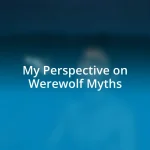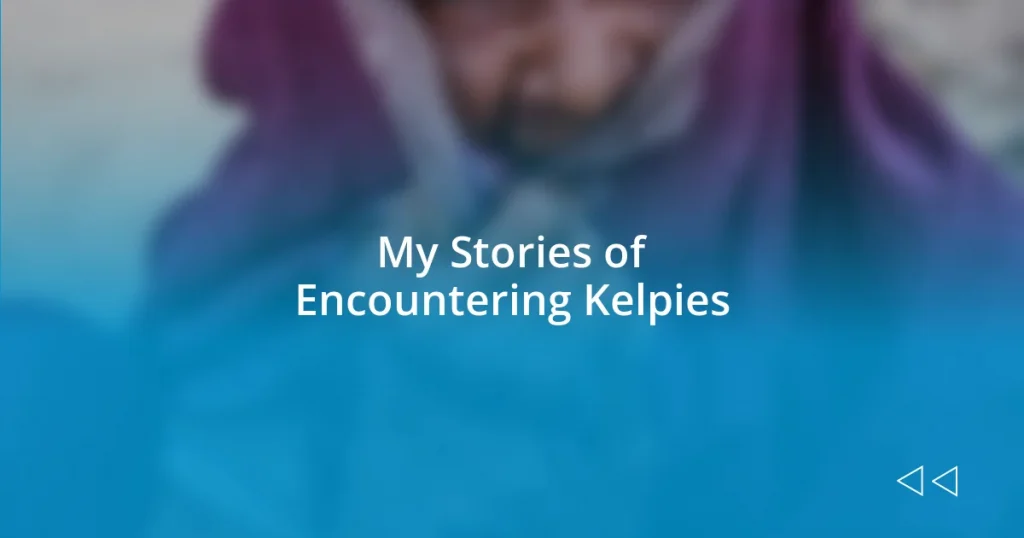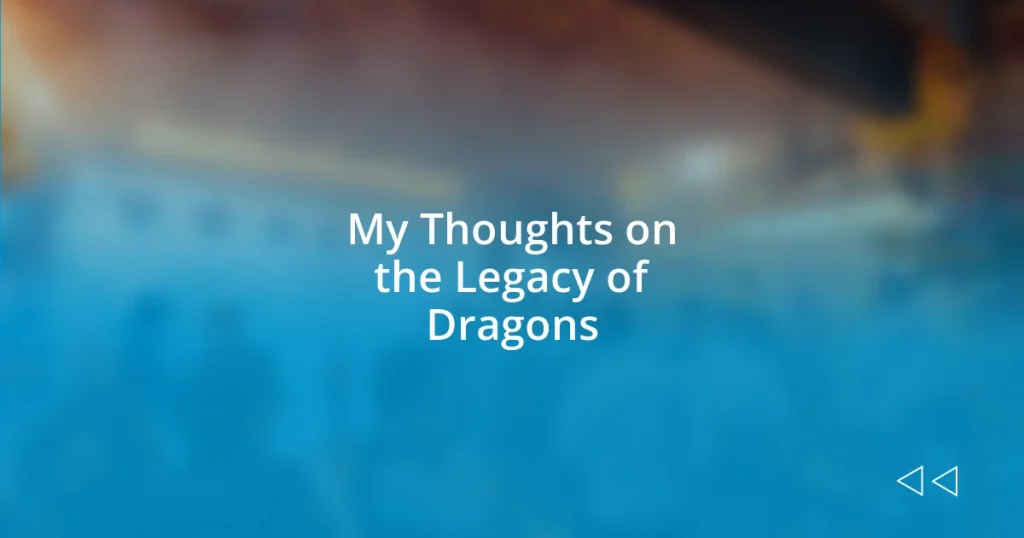Key takeaways:
- Cuneiform, one of the earliest writing systems, evolved from pictographs into complex symbols, offering insights into ancient Mesopotamian culture and daily life.
- Utilizing a combination of tools such as grammar guides, online databases, and study groups enhances the decoding and understanding of cuneiform.
- Knowledge of cuneiform has practical applications in fields like archaeology and history, enriching academic discussions and inspiring creative writing.
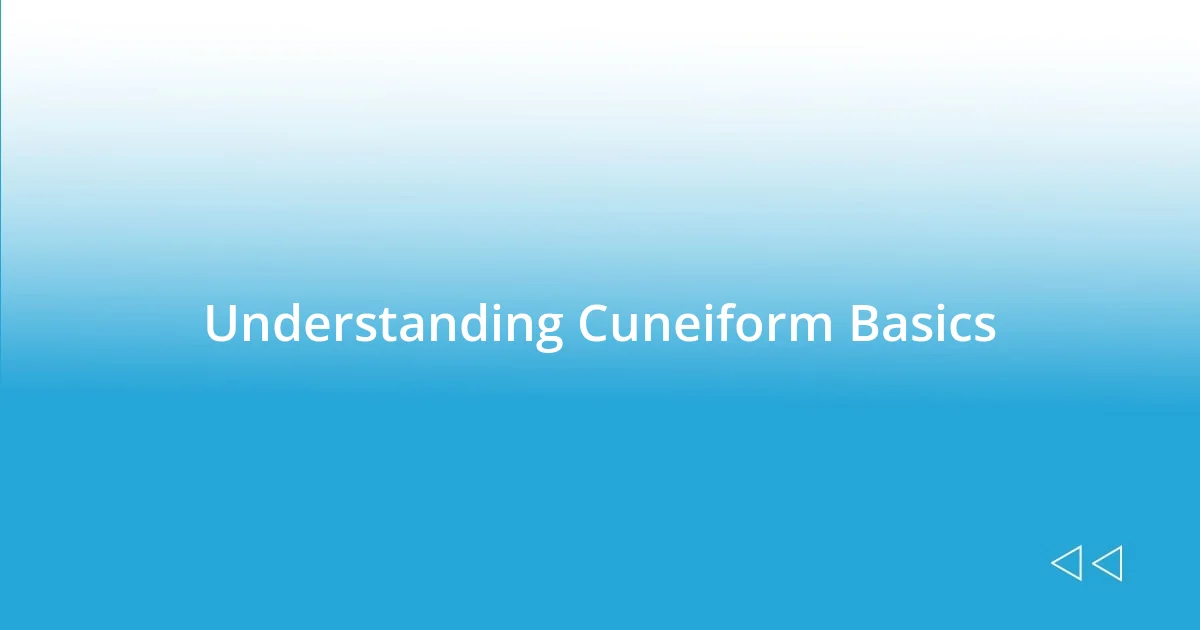
Understanding Cuneiform Basics
Cuneiform, one of the earliest writing systems, originated in ancient Mesopotamia around 3200 BCE. Now, imagine unearthing a 4,000-year-old clay tablet and feeling that tangible connection to the past. The characters, wedge-shaped marks made with a stylus, represent not just words but a bridge to an ancient civilization’s thoughts and daily life.
As I delved into cuneiform, I found it fascinating that it evolved from pictographs into complex symbols that conveyed sounds and concepts. Each character can tell a story, and I often wondered how the scribes felt as they transformed clay into records of their world. The intricacy of the script really reflects the sophistication of the culture behind it—it’s a remarkable testament to human creativity.
Learning to decode cuneiform can feel overwhelming at first, much like trying to decipher a forgotten language on a forgotten paper. I vividly recall the mix of excitement and frustration when I first encountered a tablet filled with these intriguing symbols. But with patience and practice, each new sign revealed layers of meaning, making every breakthrough a rewarding moment in my journey.

Tools for Decoding Cuneiform
Decoding cuneiform requires the right tools, which can significantly enhance your understanding and efficiency. I remember the first time I acquired a set of well-chosen resources; it felt like unlocking a door to a world full of possibilities. A combination of modern technology and traditional materials will serve any aspiring cuneiform scholar well.
Here are some of my go-to tools for decoding cuneiform:
- Cuneiform Grammar and Dictionary: A solid grammar guide and vocabulary dictionary are essential. They provide foundational knowledge and context.
- Online Databases: Platforms like the Cuneiform Digital Library Initiative (CDLI) offer access to thousands of tablets. Browsing these collections helps develop familiarity with different forms of writing.
- Apps and Software: Tools like cuneiform simulators can visually represent how to form the signs, making them more memorable.
- Printed Sign Lists: Having physical sign lists nearby aids quick reference, especially during those moments of confusion.
- Study Groups: Engaging with others can amplify learning. I found sharing insights and interpretations with fellow enthusiasts not only clarified concepts but also made the journey enjoyable.
These resources not only facilitate understanding but also foster a sense of community among those passionate about this ancient script.
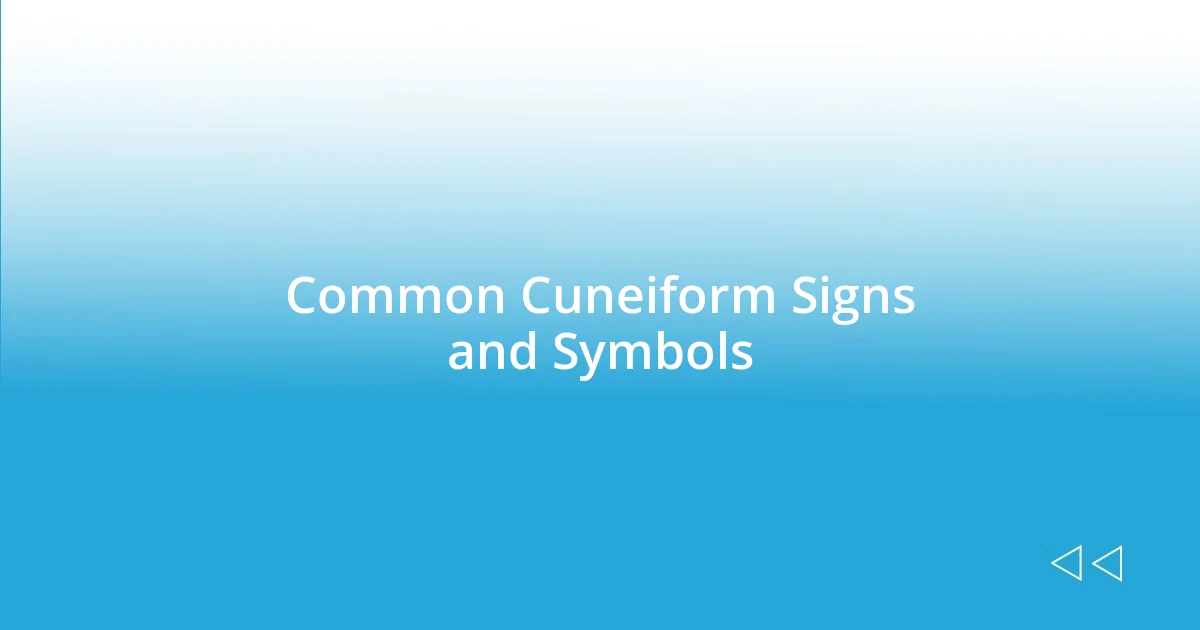
Common Cuneiform Signs and Symbols
It’s fascinating to explore common cuneiform signs and symbols, as they each carry a story within themselves. For example, the sign for “water” looks like a simple wave, yet it holds immense importance because water was vital to ancient Mesopotamian life. Remembering a moment when I first recognized “water” on a tablet sparked a rush of excitement; it was as if I had unlocked a secret shared by countless generations before me.
The significance of these signs can’t be overstated. For instance, the “god” sign, depicted with a triangular shape, exemplifies how those early scribes encapsulated complex ideas into symbols. I often think about the delicacy involved in carving these characters into clay. Each stroke needed to be precise, an art form that resonates with the meticulous nature of communication itself.
To provide a clearer picture, here’s a comparison table of some common cuneiform signs alongside their meanings and the contexts in which they were used:
| Symbol | Meaning | Context |
|---|---|---|
| God | Used in religious texts | |
| Water | Daily life and agriculture | |
| King | Royal inscriptions | |
| House | Acquisition and commerce |

Techniques for Reading Cuneiform Texts
When I first dove into reading cuneiform texts, I quickly realized that context is king. Understanding the cultural and historical background of the texts made all the difference for me. I vividly recall working on an administrative tablet that listed rations; each entry told a story beyond mere numbers. Isn’t it amazing how much context enhances our comprehension?
Transcribing cuneiform requires not just patience but also practice. I remember spending countless hours meticulously copying signs by hand. There was something meditative about this process—I could feel the connection to the ancient scribes as I shaped each character. This practice enhanced my muscle memory for the signs, allowing me to recognize them with greater ease as I progressed. Have you found that practicing a skill helps you connect more deeply with the material?
Another technique that greatly aided my understanding was leveraging multimedia resources. Watching tutorials and visual demonstrations of sign formations online opened up a new way of learning for me. I find that we all have different learning styles, right? For instance, seeing the signs animated or hearing them pronounced reinforced my retention. It’s like bringing the ancient world to life right in front of my eyes!

Strategies for Cuneiform Translation
One strategy that really helped me with cuneiform translation was developing a personal lexicon. As I encountered new signs, I jotted them down in a dedicated notebook along with their meanings and example sentences. It felt like I was building my own bridge to the past, each entry reminding me of my journey through this complex script. Have you ever felt that sense of ownership over your learning? That pride made reviewing those notes much more rewarding.
Another approach I found invaluable was forming a study group. Discussing translations with fellow enthusiasts not only clarified complex ideas but also turned learning into a shared experience. I remember one late-night session where we debated the meaning of a particularly ambiguous sign; the excitement in the air made the challenge feel exhilarating. In those moments, I realized how collaboration can enlighten perspectives that I might have missed on my own. Have you considered the power of learning from others?
Lastly, utilizing cuneiform tablets as physical artifacts was a game-changer for me. I would handle reproductions or images of original tablets, feeling the weight of history in my hands. Each tablet offered a tactile connection that enhanced my understanding of the signs and their contexts. Isn’t it fascinating how engaging with history physically can deepen our intellectual grasp? The sensation of holding something so ancient truly sparked my imagination and motivation.
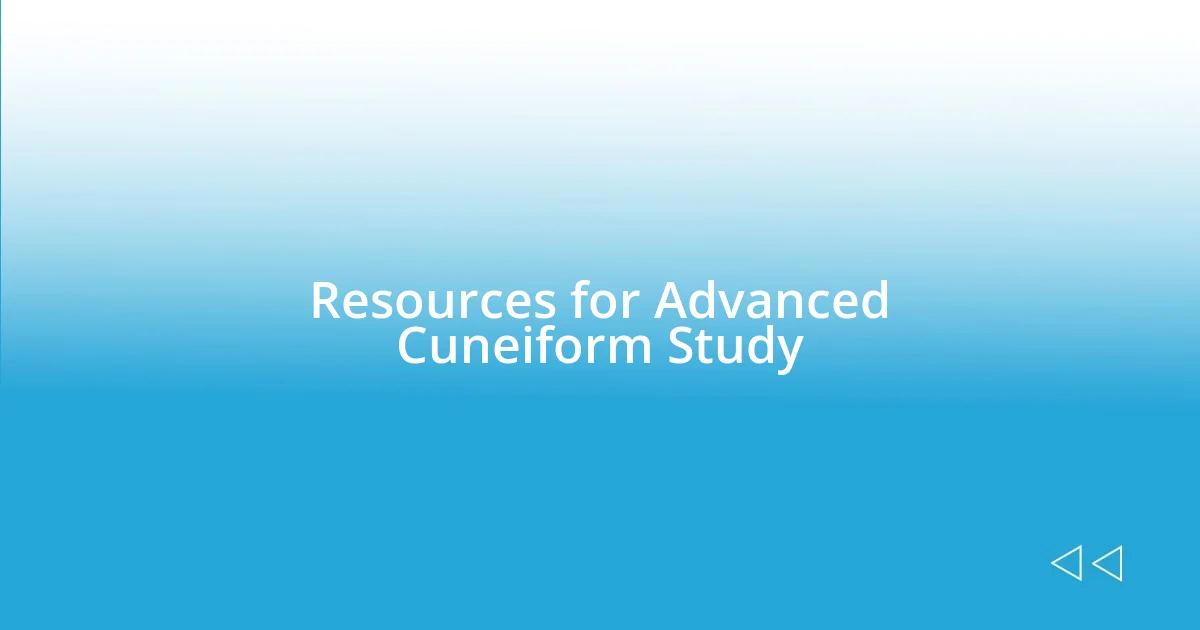
Resources for Advanced Cuneiform Study
I’ve found a treasure trove of resources for diving deeper into advanced cuneiform study. For instance, digital libraries like the Cuneiform Digital Library Initiative (CDLI) offer thousands of tablet images and translations—each one a window into ancient life. I often spend hours exploring their archives, completely absorbed in the nuances of various texts. Have you had that moment when you discover a tablet that resonates with your interests? It’s like unearthing a piece of history that was waiting just for you.
Attending academic conferences has also been an enlightening experience. I remember my first conference, filled with scholars sharing cutting-edge research—each presentation sparked new ideas for my studies. The interactions during these events are golden; discussing findings over coffee often leads to unexpected insights. How much can we learn just by engaging in conversations with experts and peers alike? It’s that spark of inspiration that can drive our understanding to new heights.
Additionally, investing in key textbooks is essential for serious students. One pivotal book for me was “Cuneiform: Ancient Scripts” by Irving Finkel, which not only covers the basics but also delves into more intricate aspects of reading and interpreting texts. I recall marking the margins with my thoughts and observations! Engaging with such detailed material can significantly refine your understanding of the nuances in cuneiform. What’s your go-to resource when you hit a wall in your studies?

Practical Applications of Cuneiform Knowledge
Understanding cuneiform can open up a wealth of practical applications, especially in fields like archaeology and history. I remember transcribing a tablet during a summer internship, where the thrill of deciphering a historical text felt like solving a mystery. It wasn’t just about translating words; it was about piecing together the culture and daily lives of people who lived thousands of years ago. Have you ever had a moment where you felt connected to history through your studies? It’s a profound experience that brings the past alive.
Moreover, knowledge of cuneiform can be incredibly valuable in academic settings. For instance, when I presented a paper on the economic implications of trade inscriptions, I noticed how my insights sparked discussions among my peers. Those conversations often lead to interdisciplinary connections, merging literature, economics, and history into a rich tapestry of understanding. Isn’t it exciting how a single script can serve as a gateway to so many different fields of inquiry?
On a more personal level, I often utilize my cuneiform skills in creative writing. Incorporating ancient narratives into my storytelling allows me to explore themes of human experience that resonate across time. When I weave in elements from cuneiform texts, it feels like I’m breathing life into my characters, making their struggles and triumphs relatable in a modern context. Have you ever thought about how ancient knowledge can inspire new stories today? It’s amazing how the wisdom of the ancients can inform our very contemporary lives.


